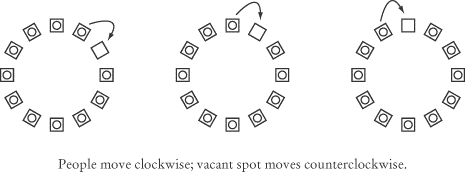Lesson: Chapter - 14
Current
When a wire is connected between the terminals of a battery, the potential
difference in the battery creates an electric field in the wire. The electrons
at the negative terminal move through the wire to the positive terminal.
Video Lesson
v>

Although the electrons in the wire move quickly, they go in random directions
and collide with other electrons and the positive charges in the wire. Each
electron moves toward the positive terminal at a speed
Vd,
called the drift speed, which is only about one millimeter per second.
However, when we study circuits, we do not follow individual electrons as they
move along the wire, but rather we look at the current,
I, that they create. Current is the
charge per unit time across an imaginary plane in the wire:
I = Q/t
The unit of current is the coulomb per second, which is called an ampere
(A): 1 A = 1 C/s.
Direction of Current
Although the electrons are the charge carriers and move from the negative
terminal to the positive terminal of the battery, the current flows in the
opposite direction, from the positive terminal to the negative terminal. This
may seem odd, but we can draw an analogous example from everyday life. Suppose
you arrange 12 chairs in a circle, and get
11 people to sit down, leaving one chair
empty. If each person in turn were to shift over in the clockwise direction to
fill the vacant spot, the vacant spot would appear to move in the
counterclockwise direction. If we think of the electrons in a circuit as the
people, then the current moves in the direction of the vacant spot.

Next to display next topic in the chapter.
Practice Questions
Video Lessons and 10 Fully Explained Grand Tests
Large number of solved practice MCQ with explanations. Video Lessons and 10 Fully explained Grand/Full Tests.